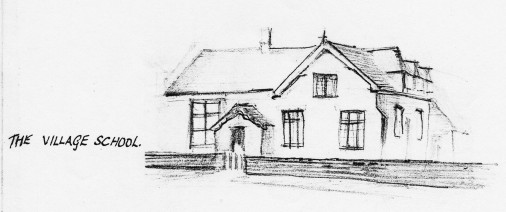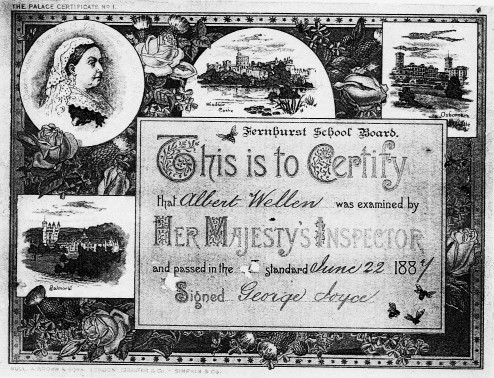The Fernhurst Society
Memories of Fernhurst: education
previous page | next page | Contents
EDUCATION
Education was not lacking for the children of Fernhurst, if their parents desired if for them, before the opening of the church school in 1873. A small private school was at Upper Cross for girls only. They were taught reading, sewing and the church catechism. About eight little girls attended and in 1934 some of them were still living. Mrs Dillaway was very much loved by her children.
Boys were not admitted to this school at Upper Cross, so a school for boys was opened at the end of Post Office Row. This school was presided over by Miss Greenaway, but the fees she charged were not sufficient to make it pay, so a cobbler worked at one end of the room, the boys sitting on form at the other. One of the boys who sat on a form was James Hill, whom we have mentioned previously.
But a Fernhurst National School was opened on the Green in 1873 and to this school were admitted 128 children on 14 April. We do not know the ages of these children, but feel glad that they were able to begin school life and meet other children day by day. There are grandparents in Fernhurst who remember with mixed feelings. 2 May was their first holiday. ‘It was the custom for the children of the village to be given a Tea on May-Day’ and the village had a general holiday.
Things that do happen in a village very much governed the school attendance. Children went to the hop fields with their parents each September. In November several boys were away each year for the winter months to work in the woods and copses with their fathers. In the summer the children also helped in the hayfields and in due season the cornfields, some families going as far afield as Chichester. During these periods the children’s attendance at school was very much interrupted. But there were other country occupations, such as acorn picking, bark scraping and whortleberry picking, which the children enjoyed, so school life was mixed with the activities of the village life.
In 1875 the school fees were raised from 2d a week for children of seven and over, the infants remaining at 1d. This seems to have caused much controversy, and for quite a time the majority of parents refused to pay the higher fee. In 1881 the school was taken over by the School Board and thus became a Board School, as the church authorities could not afford to keep the school going. Improvements in 1881 caused school work to be done with great difficulty as a new infant room was built and the gallery taken out of the old infant room. This would be a great improvement but not liked by all the little ones at first, as they loved sitting in the gallery.
In 1882 there were nearly 200 children present each day and nearly 100 children in the infant room and the attendance was very much improved. In 1887 there was ain inspection by HMI and an examination. The successful scholars were awarded a very decorative certificate of merit. Residents tell of the bad roads the children had to traverse and lack of facilities for them when they arrived at school in bad weather, the majority having had a long walk to school. In 1891 a very severe snowstorm blocked the roads and the school was closed for several days.
In October 1910 it is noted that ‘three Fernhurst lads have gained county Scholarships, which enables them to attend the Midhurst Grammar School’. They received many congratulations from the village. In 1910 no buses were available so there was the great problem of transport. One lad we know went by pony for a period and finally stayed in Midhurst during the week. The other two boys walked and were given lifts on horses and farm carts occasionally.
During the years many children from Fernhurst School have won their way to the Grammar School and transport has become easier and indeed very comfortable. During the First World War the school was closed for a period.
We are glad that in 1902 a new classroom was added. Now in 1958 the children leave Fernhurst School when they become eleven years of age. They attend the Grammar School or the Midhurst Modern Secondary School, travelling very comfortably in a special bus and wearing school uniform.
For a few years now Fernhurst School has had a very up-to-date canteen at which the children are provided with a wonderfully planned midday meal. It is a pleasure to see them enjoying it. The children who like milk can have their small bottle each morning. We have truly progressed from the time when the children from a distance brought their sandwiches and walked all the way. Now a bus service and a taxi for those whose homes the bus does not serve when on the outskirts of the village.
A very memorable prize distribution took placed at the school on 19 March 1909. Mrs Salvin presented prizes to Mary West, Ivy Hartwright and Alfred West for five years perfect attendance. They each received a silver watch, what proud children they would be. Archie Hartwright, James West and James Lambert each received a gilt medal for three years perfect attendance.
previous page | next page | Contents



The Fernhurst Oral History Project was supported by the Local Heritage Initiative. The Local Heritage Initiative was developed by the Countryside Agency and was funded by the Heritage Lottery Fund and Nationwide Building Society.



